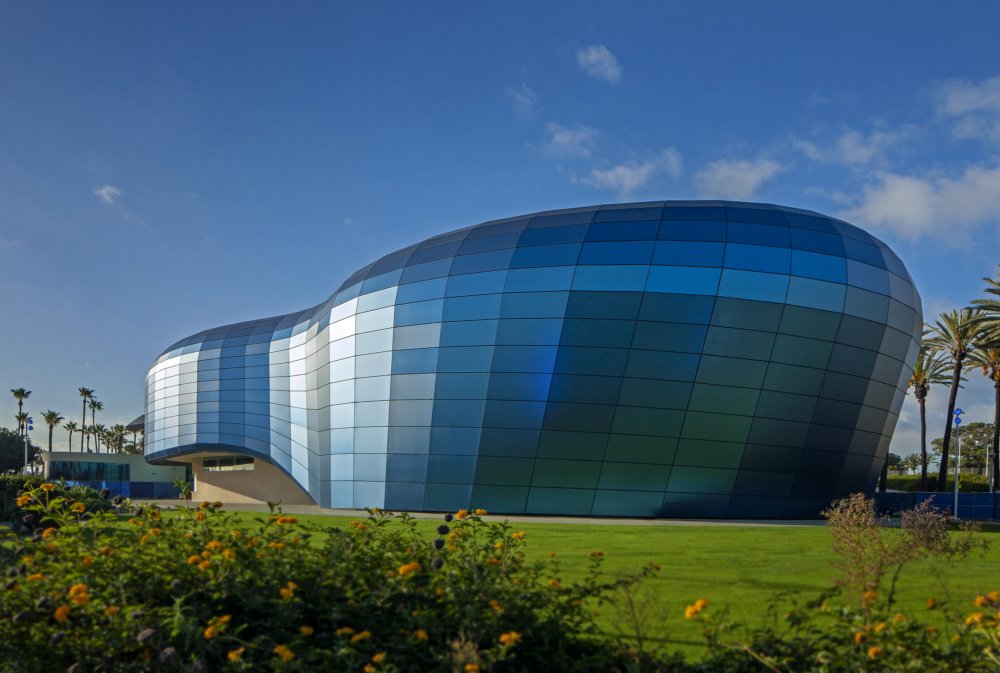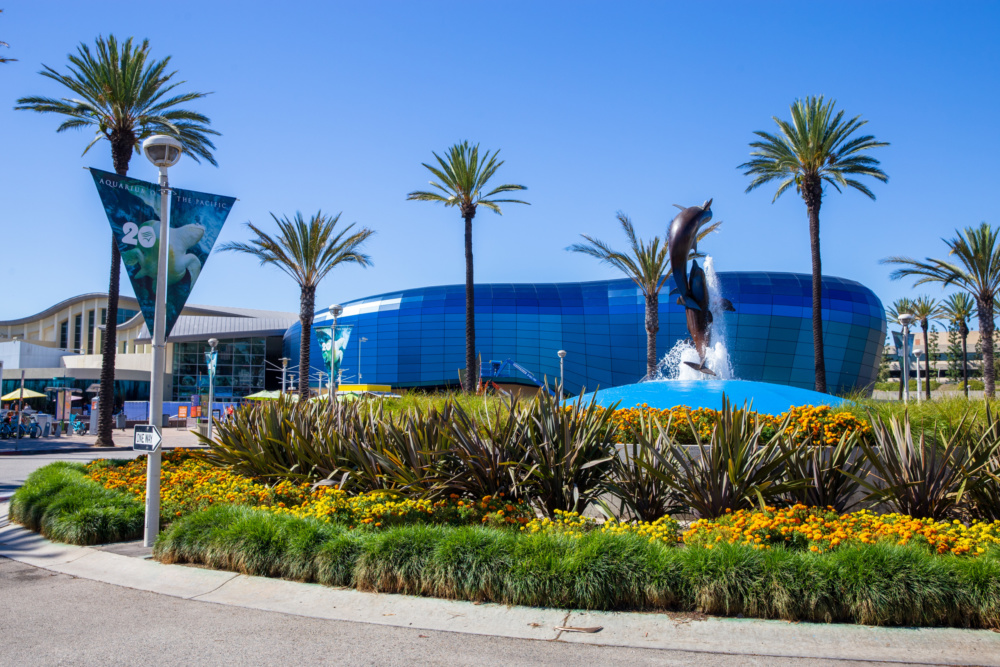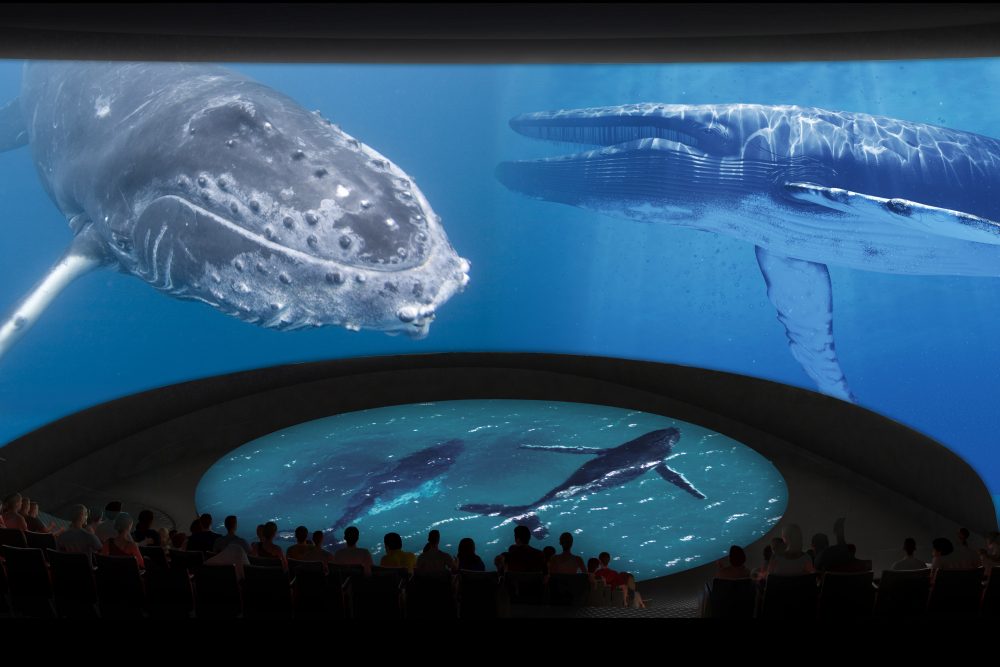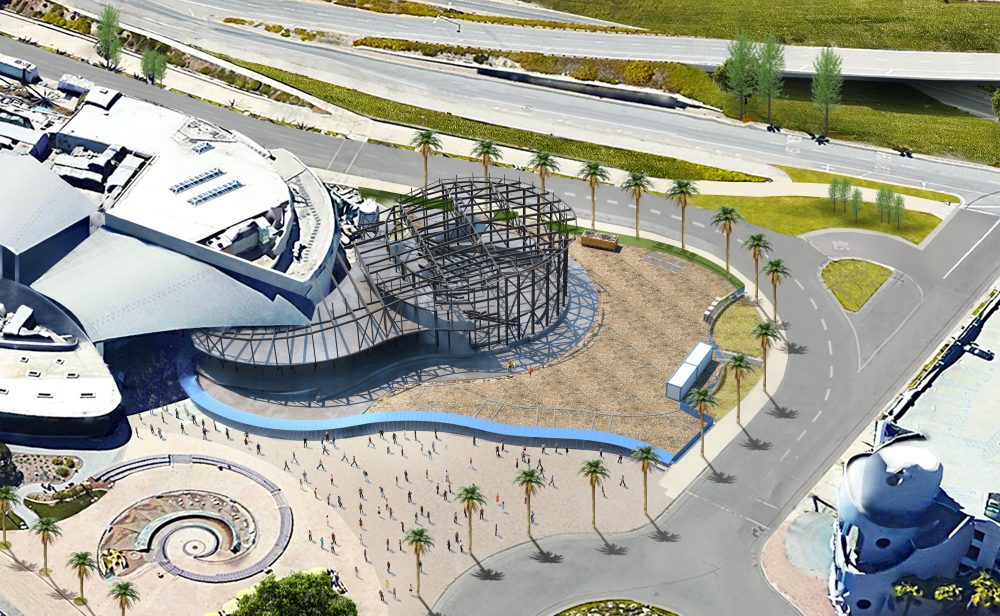In California’s Long Beach, a new biomorphic mass has surfaced along the waterfront. The semi-reflective blue structure is not a beached endangered species, but the Esherick Homsey Dodge and Davis (EHDD)–designed Pacific Visions wing of the Aquarium of the Pacific. The 29,000-square-foot project, which is set for a May 2019 public opening, features a triple-laminated glass facade rain screen subject to three different treatments.
Unlike the preexisting wing of the Aquarium of the Pacific, the newly designed Pacific Visions places an emphasis on curatorial spaces—the facility will hold an art gallery, exhibition space, and an immersive theater. In effect, the internal program requires a black box experience to function accordingly.
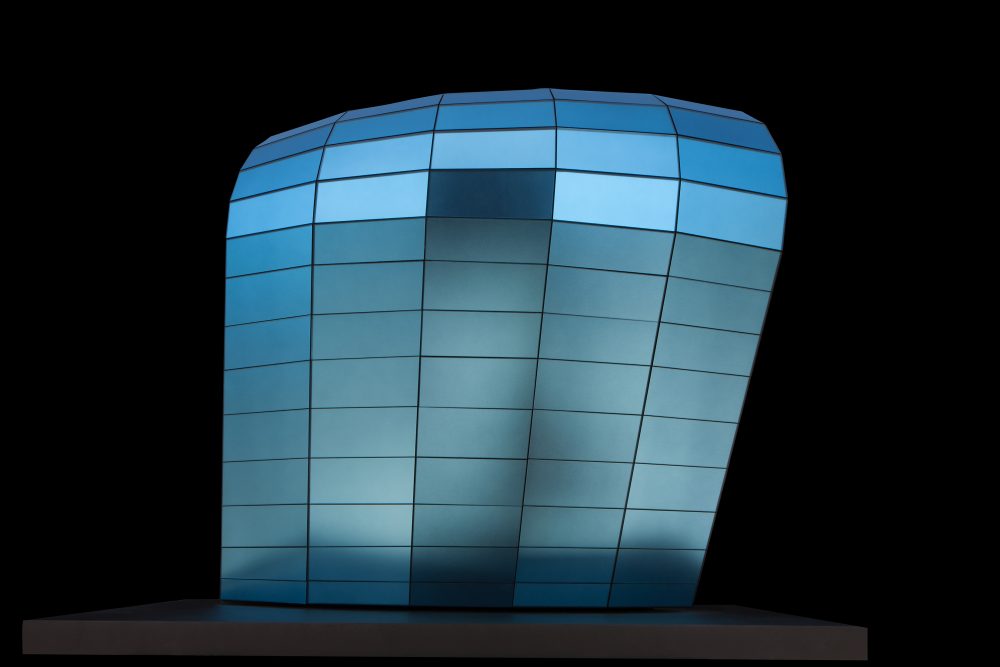
Seeing as daylight is not needed for the wing’s interior spaces, glass was not the immediate choice for their facade cladding. Working with Buro Happold Consulting Engineers, EHDD experimented with a range of different materials following a planar cladding system envisioned as a continuous sinuous surface. According to the design team, they decided on “a completely unique glass assembly to evoke the effect of light on water, its depth, variability, and luminosity.”
The dynamic visual qualities of the glass paneling system rely on a trio of layered treatments by California manufacturer Pulp Studio. The manufacturer produced the glass panels over the course of four months, shipping them on A-frames to installer Woodbridge Glass Inc. Bernard Lax, founder of Pulp Studio, referred to the fabrication process as an “exercise in frustration,” owing to the complexity in producing hundreds of unique glass panels with highly particular treatments.
“The innermost layer incorporates a subtle reflective finish that picks up changing light conditions and modulates the hue of the tinted middle layer,” said EHDD senior associate Quyen Luong, “the outer layer is made of low-iron, acid-etched glass, which eliminates direct reflection of the sky by diffusing light.”
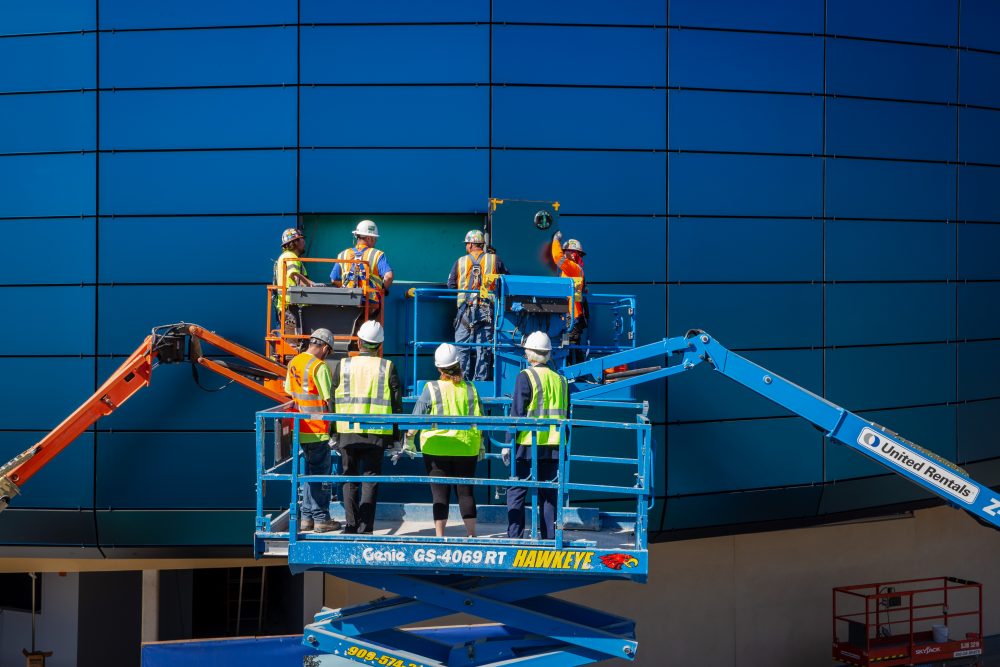
In total, the facade features over 800 unique glass panels encompassing a surface area of approximately 18,000 square feet. EHDD worked with Sentech Architectural Systems to custom design an open-joint steel aluminum carrier frame painted with a stringent resistant coating. Fixing the cladding in place without disrupting the sinuous surface of the facade remained a stylistic obstacle for the project—the city of Long Beach requires all facade panels to be mechanically secured regardless of any use of structural silicone.
The design team took this challenge head-on by tapering the profile and size of the facade clips and examining their potential layout throughout the enclosure system. Through methodical research and adaptation, EHDD associate Katherine Miller notes “the retention clips add a sense of scale and rhythm. What was initially considered a compromise resulted in an opportunity to add another level of articulation to the faceted geometry of the facade.”
Quyen Luong will be presenting EHDD’s Pacific Visions on February 7 at Facades+ San Francisco.
